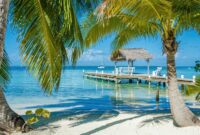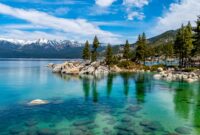Senior travel groups offer a unique blend of adventure, relaxation, and cultural immersion, catering to diverse interests and activity levels. These groups provide a supportive and social environment, allowing seniors to explore new destinations and create lasting memories while enjoying the convenience and safety of organized travel. Whether you seek thrilling adventures or peaceful retreats, there’s a senior travel group perfectly suited to your preferences.
This exploration delves into the various types of senior travel groups, highlighting popular destinations, logistical considerations, cost factors, and effective marketing strategies. We’ll examine the benefits and challenges of group travel for seniors, providing illustrative examples and addressing common concerns to empower you with the knowledge needed to plan an unforgettable journey.
Types of Senior Travel Groups
Choosing the right senior travel group depends heavily on individual preferences and desired activity levels. Senior travel caters to a wide range of interests and physical capabilities, ensuring a fulfilling experience for everyone. This section outlines different types of groups and provides examples of potential itineraries.
Senior Travel Group Categorization by Activity Level
Senior travel groups are often categorized based on their activity level, ranging from relaxing getaways to adventurous expeditions. This allows individuals to select a trip that perfectly matches their physical capabilities and travel style. Understanding these categories helps in making an informed decision about the type of travel experience that will be most enjoyable.
Examples of Senior Travel Group Itineraries
The following table provides examples of different senior travel group itineraries, illustrating the variety available. These examples are for illustrative purposes and many variations exist. Specific itineraries are subject to change based on factors such as seasonality and availability.
| Group Type | Activity Level | Itinerary Example | Duration |
|---|---|---|---|
| Relaxation and Wellness Retreat | Low | Seven-day stay at a luxurious spa resort in Sedona, Arizona, featuring daily yoga, meditation sessions, and access to thermal pools. Includes guided nature walks and optional massage treatments. | 7 days |
| Cultural Immersion Tour | Moderate | Ten-day tour of Italy, visiting Rome, Florence, and Venice. Includes guided tours of historical sites, museums, and art galleries, with opportunities for leisurely exploration and enjoying local cuisine. | 10 days |
| Active Adventure Tour | High | Two-week hiking and trekking tour in Costa Rica, exploring rainforests, volcanoes, and national parks. Includes moderate to challenging hikes, wildlife viewing opportunities, and stays in eco-lodges. | 14 days |
| Coastal Cruise | Low to Moderate | Seven-day cruise along the Alaskan coastline, featuring scenic views, wildlife spotting (whales, bears), and onboard activities such as lectures and entertainment. Shore excursions are optional. | 7 days |
Popular Destinations for Senior Travel Groups
Choosing the right destination is paramount for a successful senior travel experience. Factors such as ease of navigation, access to healthcare, and culturally enriching activities heavily influence the selection process. This section will highlight destinations consistently favored by senior travel groups, focusing on their accessibility, amenities, and cultural offerings.
Popular Destinations and Their Appeal
Several destinations consistently rank highly among senior travelers due to a combination of factors. These include a balance of relaxation, cultural immersion, and manageable travel logistics. For instance, destinations known for their slower pace of life and well-developed infrastructure often prove more appealing than fast-paced, densely populated areas. The availability of accessible transportation and accommodation is also a critical factor.
Accessibility Features and Amenities in Popular Destinations
Destinations like Portugal, known for its charming towns and relatively flat terrain, offer excellent accessibility. Many hotels and attractions in Lisbon and Porto, for example, provide wheelchair access, ramps, and elevators. Similarly, cities in Canada such as Quebec City, with its cobblestone streets, offer a manageable walking experience for many seniors, particularly those using walking aids. Cruises, another popular option, often offer accessible cabins and onboard amenities designed for seniors with mobility challenges. Many tour operators specializing in senior travel also provide customized itineraries and support services to cater to individual needs.
Cultural Experiences Suitable for Seniors
The cultural experiences offered should be both enriching and manageable. Consider the walking distances involved in exploring historical sites or museums. Destinations with well-preserved historical sites and easily navigable museums are particularly attractive. For example, the well-preserved Roman ruins in Italy are often presented in a way that is easily accessible and informative for senior visitors. Guided tours, often tailored to slower paces and including ample rest stops, are commonly available. Furthermore, many destinations offer cultural events, such as concerts or festivals, in venues with good seating and accessibility features, ensuring seniors can fully participate.
Planning and Logistics of Senior Travel Groups
Planning a successful senior travel group trip requires meticulous attention to detail, ensuring a comfortable, safe, and enjoyable experience for all participants. This involves careful consideration of transportation, accommodation, activities, and importantly, the unique health and safety needs of older travelers. Effective planning minimizes stress and maximizes the enjoyment of the journey.
Transportation Considerations for Senior Travel Groups
Choosing the right transportation is crucial for a smooth trip. Factors to consider include the group size, the destinations’ accessibility, and the physical capabilities of the participants. Options range from comfortable chartered buses for shorter distances to air travel for longer journeys. When arranging air travel, it’s vital to select airlines known for their excellent service and assistance to senior passengers, potentially including pre-boarding options. For ground transportation at destinations, pre-arranged shuttle services or easily navigable public transport should be prioritized over options requiring extensive walking or navigating complex routes. Consider the need for accessible vehicles for those with mobility issues. Detailed travel information, including flight numbers and bus schedules, should be provided to participants well in advance.
Accommodation for Senior Travel Groups
Selecting suitable accommodation is paramount. Hotels should be chosen based on accessibility, proximity to planned activities, and the availability of amenities catering to senior travelers. These amenities might include elevators, accessible rooms, grab bars in bathrooms, and readily available medical assistance. The proximity of the hotel to medical facilities should also be a primary consideration. Furthermore, the hotel’s services, such as concierge services or assistance with luggage, should be assessed to ensure a comfortable stay. For example, choosing a hotel with a pool and spa facilities could enhance the overall experience and provide opportunities for relaxation and socialization.
Activity Planning for Senior Travel Groups
The planned activities should be tailored to the physical capabilities and interests of the group members. A mix of leisurely and moderately active activities is ideal, with options for those who prefer a slower pace. Activities should be planned with ample rest periods built in. The pace and duration of each activity should be carefully considered, and alternatives should be available for those who may not be able to participate in certain activities. For instance, a walking tour could be complemented by a bus tour covering the same area for those with mobility limitations. Pre-booking tickets for attractions and tours helps streamline the itinerary and avoids potential queues and delays.
Managing Health and Safety Concerns During Group Travel
Prioritizing health and safety is non-negotiable. A detailed medical information form should be collected from each participant prior to the trip, detailing any pre-existing medical conditions, allergies, and medications. Emergency contact information should also be readily available. Travel insurance that covers medical emergencies and trip cancellations is essential. A designated point of contact within the group should be identified, who can communicate with the group leader and any necessary medical professionals. First-aid kits and any necessary prescription medications should accompany the group. Regular check-ins with group members throughout the trip are recommended to ensure everyone is well and to address any concerns promptly. Consider including a qualified medical professional as part of the travel group, particularly for trips involving challenging activities or remote locations.
Sample 7-Day Senior Travel Group Trip Itinerary
This itinerary assumes a moderate activity level and is adaptable to different interests and destinations.
| Day | Activity | Transportation | Accommodation |
|---|---|---|---|
| 1 | Arrival and Check-in at Hotel; Welcome Dinner | Airport Transfer (Pre-arranged Shuttle) | Hotel X (City Center) |
| 2 | Guided Walking Tour of Historical City Center; Afternoon at Leisure | Walking Tour (with option for bus tour); Public Transport | Hotel X |
| 3 | Day Trip to Scenic Coastal Town; Lunch at Local Restaurant | Chartered Bus | Hotel X |
| 4 | Visit to Local Museum and Art Gallery; Afternoon Tea | Public Transport; Taxi | Hotel X |
| 5 | Relaxation Day: Spa Treatments and Pool Time (optional); Free Time for Shopping | N/A | Hotel X |
| 6 | Optional Excursion: Wine Tasting Tour or Botanical Gardens Visit | Chartered Bus/Taxi | Hotel X |
| 7 | Departure | Airport Transfer (Pre-arranged Shuttle) | N/A |
Cost and Budget Considerations
Planning a senior travel group requires careful consideration of the financial aspects to ensure a comfortable and enjoyable experience for all participants. The total cost will significantly vary depending on the chosen travel style, destination, and the duration of the trip. Understanding these variations is crucial for setting realistic expectations and creating a budget that accommodates everyone’s needs.
Budgeting for a senior travel group involves a comprehensive assessment of various expenses. These include transportation (flights, buses, local transport), accommodation (hotels, resorts, or alternative lodging), meals, activities and excursions, entrance fees to attractions, travel insurance, and miscellaneous spending money. The overall cost can differ substantially based on the level of luxury, the inclusion of guided tours, and the specific destinations selected.
Comparison of Costs: Guided Tours vs. Independent Travel
Guided tours typically offer a more inclusive and streamlined experience. Costs are often bundled together, encompassing transportation, accommodation, meals, and planned activities. This can provide a sense of convenience and simplicity, but it may also lead to higher overall expenses compared to independent travel. Independent travel, on the other hand, offers greater flexibility and control over the budget. Seniors can choose their own flights, accommodation, and activities, potentially leading to cost savings, but requires more planning and research. For example, a 10-day guided tour of Europe might cost $5,000 per person, while a similar trip planned independently could range from $3,000 to $4,500 depending on choices of accommodation and activities.
Budget-Friendly Travel Options for Senior Groups
Several strategies can help senior travel groups manage their budget effectively. Consider traveling during the off-season or shoulder seasons to take advantage of lower prices on flights and accommodation. Opting for budget-friendly accommodations such as guesthouses, hostels (dorm-style or private rooms), or vacation rentals can significantly reduce lodging costs. Planning meals strategically, incorporating picnics and self-catering options, can also lower food expenses. Choosing free or low-cost activities like walking tours, visiting parks, or exploring local markets can minimize entertainment costs. For instance, a group could choose to stay in a comfortable but less expensive hotel outside a major city center and utilize public transportation to reach attractions, saving considerably on accommodation and transportation costs.
Finding Affordable Travel Insurance for Senior Travelers
Securing comprehensive travel insurance is crucial for senior travelers, particularly given potential health concerns. However, insurance premiums can be higher for older individuals. To find affordable options, compare quotes from multiple insurers, utilizing online comparison tools. Look for policies that specifically cater to the needs of senior travelers, offering adequate medical coverage, emergency evacuation services, and trip cancellation protection. Consider policies with higher deductibles to lower premiums, but carefully assess the potential out-of-pocket expenses. It’s also beneficial to explore senior-specific discounts or group rates offered by some insurance providers. For example, AARP offers travel insurance plans designed for their members, often at competitive rates.
Marketing and Promotion of Senior Travel Groups
Successfully marketing senior travel groups requires a multi-faceted approach that resonates with the target demographic’s specific needs and preferences. Understanding their priorities – comfort, safety, value, and social interaction – is key to crafting compelling marketing materials and choosing effective promotional strategies.
Effective communication highlights the unique advantages of group travel for seniors, emphasizing the reduced stress and enhanced social aspects. Marketing materials should clearly showcase the itinerary, accommodation details, and the overall value proposition, while also addressing potential concerns such as accessibility and physical demands.
Marketing Materials for Senior Travelers
Brochures and website content should be visually appealing and easy to read, using large fonts and clear imagery. High-quality photographs depicting happy seniors enjoying various activities on a trip are essential. Brochures should include concise descriptions of each tour, highlighting key features such as included meals, excursions, and transportation. Website content should provide detailed itineraries, pricing information, testimonials from past travelers, and a clear booking process.
Communicating the Benefits of Group Travel to Seniors
Marketing materials should focus on the benefits that resonate most with seniors. These include the convenience and ease of pre-arranged travel plans, eliminating the stress of independent travel planning. The emphasis should be on stress-free travel, allowing seniors to relax and enjoy their experience without the hassles of navigating unfamiliar locations or arranging logistics. Highlighting opportunities for socialization and companionship is also crucial, emphasizing the chance to meet new friends with shared interests.
Examples of benefit-driven messaging could include: “Enjoy worry-free travel with our all-inclusive packages,” “Connect with fellow travelers and make lifelong friends,” or “Explore the world without the stress of planning.”
Promotional Strategies for Senior Travel Groups
Reaching the target demographic requires a strategic approach utilizing various channels. Print advertising in publications catering to seniors, such as retirement magazines or community newspapers, remains effective. Digital marketing, including targeted social media advertising on platforms like Facebook and Instagram, allows for precise targeting based on demographics and interests. Collaborating with senior centers, retirement communities, and travel agencies specializing in senior travel can expand reach and build trust within the community.
Furthermore, leveraging email marketing to nurture leads and send targeted promotions to subscribers is a cost-effective way to maintain engagement. Participating in senior-focused events and trade shows provides opportunities for direct interaction and building relationships with potential customers. Finally, utilizing testimonials from satisfied past travelers adds credibility and social proof, influencing decision-making within the target audience.
Benefits and Challenges of Group Travel for Seniors
Group travel offers seniors a unique blend of advantages and disadvantages. While the camaraderie and convenience can be incredibly appealing, potential drawbacks need careful consideration before embarking on a group tour. Weighing these factors is crucial for ensuring a positive and memorable travel experience.
Group travel provides seniors with a structured and supportive environment, mitigating many of the logistical complexities and anxieties associated with independent travel. This structured approach allows seniors to focus on enjoying their trip rather than navigating unfamiliar territories or dealing with unforeseen circumstances. However, the very structure that offers comfort can also present limitations on personal freedom and spontaneity.
Social and Emotional Benefits of Group Travel
The social aspect of group travel is a significant draw for many seniors. Sharing experiences with like-minded individuals fosters a sense of community and belonging. Conversations around meals, shared excursions, and evenings spent in shared accommodation create opportunities for connection and friendship. This social interaction combats loneliness and isolation, which are significant concerns for many older adults. The shared experiences contribute to a sense of purpose and fulfillment, boosting morale and overall well-being. Many seniors find that the emotional support offered within a group provides added confidence and reduces anxieties associated with travel, especially if traveling alone.
Challenges of Group Travel and Mitigation Strategies
Several challenges are inherent in group travel. One common issue is the pace of the itinerary. While structured itineraries provide convenience, they may not always cater to individual preferences or physical limitations. Some itineraries might be too fast-paced for some seniors, while others might feel too slow. To mitigate this, choosing tours with flexible itineraries or opting for smaller, more personalized groups can help. Another challenge is the potential for personality clashes within the group. Careful consideration of the tour operator’s reputation and group size can help minimize this risk. Thorough pre-trip communication and clear expectations can also help set the tone for a harmonious travel experience. Finally, health concerns can present unforeseen challenges. Selecting tours with appropriate levels of medical support and insurance coverage is crucial. Choosing destinations with accessible infrastructure and facilities further enhances safety and comfort. Pre-trip medical consultations and travel insurance are essential elements in mitigating health-related risks.
Illustrative Examples of Senior Travel Group Experiences
To illustrate the diverse possibilities within senior group travel, we present three distinct examples: an adventure-focused trip, a relaxation-focused getaway, and a culturally immersive journey. Each showcases different aspects of what makes group travel appealing to seniors, highlighting the balance between planned activities and opportunities for social interaction.
Adventure-Focused Senior Travel Group Experience: Hiking in the Scottish Highlands
This 10-day adventure in Scotland caters to active seniors with a moderate fitness level. Participants stay in comfortable, yet rustic, lodges offering stunning views of the Highlands. Days are filled with guided hikes through breathtaking scenery, ranging in difficulty to accommodate varying abilities. Evenings feature communal dinners, storytelling sessions around crackling fireplaces, and opportunities to share experiences. Expert guides ensure safety and provide engaging insights into the local flora, fauna, and history. The group size is kept intentionally small (12-15 participants) to foster a close-knit atmosphere and facilitate personalized attention.
Relaxation-Focused Senior Travel Group Experience: Spa Retreat in Tuscany
This seven-day Tuscan retreat emphasizes relaxation and rejuvenation. Guests are accommodated in a luxurious villa with private rooms and access to a spa with thermal pools, saunas, and massage facilities. Days are structured to allow for ample downtime, interspersed with gentle yoga sessions, cooking classes focusing on Tuscan cuisine, and wine tasting excursions to nearby vineyards. Evenings offer opportunities for socializing over delicious meals and leisurely conversations. The focus is on unwinding and connecting with nature and fellow travelers in a tranquil setting. The group size is slightly larger (15-20 participants) allowing for a more varied social dynamic.
Culturally Focused Senior Travel Group Experience: Exploring the Ancient Wonders of Egypt
This 14-day tour of Egypt provides a deep dive into ancient history and culture. Accommodation is provided in comfortable, well-located hotels near major historical sites. The itinerary includes guided tours of the Pyramids of Giza, the Sphinx, the Valley of the Kings, and various temples and museums. Expert Egyptologists provide insightful commentary throughout the journey. Evenings offer opportunities for group dinners, lectures on ancient Egyptian civilization, and optional excursions to local markets and cultural performances. The emphasis is on learning and experiencing a rich cultural heritage, while enjoying the company of fellow travelers who share a similar interest. This tour maintains a medium group size (18-22 participants) to ensure efficient site visits and comfortable group dynamics.
Image Descriptions
Image 1: Scottish Highlands Hiking
The image depicts a group of seniors, their faces flushed with exertion and smiles of accomplishment, standing atop a windswept hill in the Scottish Highlands. The vibrant green landscape stretches out before them, dotted with heather and punctuated by distant, mist-shrouded mountains. The crisp mountain air, the scent of heather, and the sound of wind whistling through the grasses are palpable. A sense of shared triumph and camaraderie fills the scene.
Image 2: Tuscan Spa Retreat
This image showcases a tranquil scene of seniors relaxing by a thermal pool nestled amidst rolling Tuscan hills. The warm, golden light of the late afternoon bathes the scene in a peaceful glow. The scent of cypress trees and blooming lavender fills the air. The gentle murmur of water, the soft music playing in the background, and the comfortable silence between the relaxing individuals create an atmosphere of serenity and rejuvenation.
Image 3: Exploring the Pyramids of Giza
The image captures a group of seniors standing in awe before the majestic Pyramids of Giza, the vast desert stretching out behind them. The ancient stones, weathered by time, are bathed in the intense Egyptian sun. The air is dry and warm, carrying the faint scent of sand and distant spices. The sense of history, the sheer scale of the pyramids, and the shared wonder on the faces of the travelers create a powerful and unforgettable moment.
Final Thoughts
Ultimately, the decision to join a senior travel group hinges on individual preferences and priorities. Careful planning, considering factors such as activity level, budget, and desired destination, is crucial for a successful and enriching experience. By understanding the advantages and potential challenges, and leveraging the resources available, seniors can embark on memorable adventures that broaden their horizons and foster lasting friendships.




